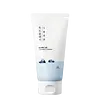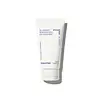What's inside
What's inside
 Key Ingredients
Key Ingredients

 Benefits
Benefits

 Concerns
Concerns

 Ingredients Side-by-side
Ingredients Side-by-side

Water
Skin ConditioningSodium Cocoyl Isethionate
CleansingGlycerin
HumectantSodium Methyl Cocoyl Taurate
CleansingCoco-Betaine
CleansingPotassium Cocoyl Glycinate
Potassium Benzoate
PreservativeSodium Chloride
MaskingPolyquaternium-67
Potassium Cocoate
EmulsifyingCitric Acid
BufferingFructooligosaccharides
HumectantSaccharide Hydrolysate
HumectantDisodium EDTA
Pullulan
1,2-Hexanediol
Skin ConditioningAllantoin
Skin ConditioningPanthenol
Skin ConditioningSea Water
HumectantSodium Acetate
BufferingButylene Glycol
HumectantChamomilla Recutita Flower Oil
MaskingCaprylic/Capric Triglyceride
MaskingBeta-Glucan
Skin ConditioningPhosphatidylcholine
EmulsifyingHyaluronic Acid
HumectantEthylhexylglycerin
Skin ConditioningCeramide NP
Skin ConditioningGlycine
BufferingHydrolyzed Hyaluronic Acid
HumectantGlutamic Acid
HumectantSerine
MaskingSodium Hyaluronate
HumectantLysine
Skin ConditioningAlanine
MaskingArginine
MaskingThreonine
Proline
Skin ConditioningWater, Sodium Cocoyl Isethionate, Glycerin, Sodium Methyl Cocoyl Taurate, Coco-Betaine, Potassium Cocoyl Glycinate, Potassium Benzoate, Sodium Chloride, Polyquaternium-67, Potassium Cocoate, Citric Acid, Fructooligosaccharides, Saccharide Hydrolysate, Disodium EDTA, Pullulan, 1,2-Hexanediol, Allantoin, Panthenol, Sea Water, Sodium Acetate, Butylene Glycol, Chamomilla Recutita Flower Oil, Caprylic/Capric Triglyceride, Beta-Glucan, Phosphatidylcholine, Hyaluronic Acid, Ethylhexylglycerin, Ceramide NP, Glycine, Hydrolyzed Hyaluronic Acid, Glutamic Acid, Serine, Sodium Hyaluronate, Lysine, Alanine, Arginine, Threonine, Proline
Water
Skin ConditioningGlycerin
HumectantSodium Cocoyl Isethionate
CleansingHydroxypropyl Starch Phosphate
Diglycerin
HumectantLimonene
PerfumingPotassium Benzoate
PreservativeSodium Methyl Cocoyl Taurate
CleansingPotassium Cocoyl Glycinate
Potassium Cocoate
EmulsifyingLavandula Angustifolia Oil
MaskingButylene Glycol
HumectantAllantoin
Skin ConditioningCitric Acid
BufferingLinalool
PerfumingSodium Phytate
Citrus Aurantium Dulcis Peel Oil
Masking1,2-Hexanediol
Skin ConditioningVaccinium Angustifolium Fruit Extract
Skin ProtectingPanthenol
Skin ConditioningCaprylic/Capric Triglyceride
MaskingMaltodextrin
AbsorbentSaccharide Hydrolysate
HumectantPropanediol
SolventAcrylates/C10-30 Alkyl Acrylate Crosspolymer
Emulsion StabilisingPolyquaternium-67
Euterpe Oleracea Fruit Extract
Rubus Idaeus Leaf Extract
Skin ConditioningWater, Glycerin, Sodium Cocoyl Isethionate, Hydroxypropyl Starch Phosphate, Diglycerin, Limonene, Potassium Benzoate, Sodium Methyl Cocoyl Taurate, Potassium Cocoyl Glycinate, Potassium Cocoate, Lavandula Angustifolia Oil, Butylene Glycol, Allantoin, Citric Acid, Linalool, Sodium Phytate, Citrus Aurantium Dulcis Peel Oil, 1,2-Hexanediol, Vaccinium Angustifolium Fruit Extract, Panthenol, Caprylic/Capric Triglyceride, Maltodextrin, Saccharide Hydrolysate, Propanediol, Acrylates/C10-30 Alkyl Acrylate Crosspolymer, Polyquaternium-67, Euterpe Oleracea Fruit Extract, Rubus Idaeus Leaf Extract
 Reviews
Reviews

Ingredients Explained
These ingredients are found in both products.
Ingredients higher up in an ingredient list are typically present in a larger amount.
1,2-Hexanediol is a synthetic liquid and another multi-functional powerhouse.
It is a:
- Humectant, drawing moisture into the skin
- Emollient, helping to soften skin
- Solvent, dispersing and stabilizing formulas
- Preservative booster, enhancing the antimicrobial activity of other preservatives
Allantoin is a soothing ingredient known for its protective and moisturizingg properties. Because of this, it is often added to products with strong active ingredients.
Studies show higher concentrations of this ingredient can promote wound healing.
Though it can be derived from the comfrey plant, allantoin is produced synthetically for cosmetic products to ensure purity.
Learn more about AllantoinButylene Glycol (or BG) is used within cosmetic products for a few different reasons:
Overall, Butylene Glycol is a safe and well-rounded ingredient that works well with other ingredients.
Though this ingredient works well with most skin types, some people with sensitive skin may experience a reaction such as allergic rashes, closed comedones, or itchiness.
Learn more about Butylene GlycolThis ingredient is an emollient, solvent, and texture enhancer. It is considered a skin-softener by helping the skin prevent moisture loss.
It helps thicken a product's formula and makes it easier to spread by dissolving clumping compounds.
Caprylic Triglyceride is made by combining glycerin with coconut oil, forming a clear liquid.
While there is an assumption Caprylic Triglyceride can clog pores due to it being derived from coconut oil, there is no research supporting this.
Learn more about Caprylic/Capric TriglycerideCitric Acid is an alpha hydroxy acid (AHA) naturally found in citrus fruits like oranges, lemons, and limes.
Like other AHAs, citric acid can exfoliate skin by breaking down the bonds that hold dead skin cells together. This helps reveal smoother and brighter skin underneath.
However, this exfoliating effect only happens at high concentrations (20%) which can be hard to find in cosmetic products.
Due to this, citric acid is usually included in small amounts as a pH adjuster. This helps keep products slightly more acidic and compatible with skin's natural pH.
In skincare formulas, citric acid can:
While it can provide some skin benefits, research shows lactic acid and glycolic acid are generally more effective and less irritating exfoliants.
Most citric acid used in skincare today is made by fermenting sugars (usually from molasses). This synthetic version is identical to the natural citrus form but easier to stabilize and use in formulations.
Read more about some other popular AHA's here:
Learn more about Citric AcidGlycerin is already naturally found in your skin. It helps moisturize and protect your skin.
A study from 2016 found glycerin to be more effective as a humectant than AHAs and hyaluronic acid.
As a humectant, it helps the skin stay hydrated by pulling moisture to your skin. The low molecular weight of glycerin allows it to pull moisture into the deeper layers of your skin.
Hydrated skin improves your skin barrier; Your skin barrier helps protect against irritants and bacteria.
Glycerin has also been found to have antimicrobial and antiviral properties. Due to these properties, glycerin is often used in wound and burn treatments.
In cosmetics, glycerin is usually derived from plants such as soybean or palm. However, it can also be sourced from animals, such as tallow or animal fat.
This ingredient is organic, colorless, odorless, and non-toxic.
Glycerin is the name for this ingredient in American English. British English uses Glycerol/Glycerine.
Learn more about GlycerinPanthenol is a common ingredient that helps hydrate and soothe the skin. It is found naturally in our skin and hair.
There are two forms of panthenol: D and L.
D-panthenol is also known as dexpanthenol. Most cosmetics use dexpanthenol or a mixture of D and L-panthenol.
Panthenol is famous due to its ability to go deeper into the skin's layers. Using this ingredient has numerous pros (and no cons):
Like hyaluronic acid, panthenol is a humectant. Humectants are able to bind and hold large amounts of water to keep skin hydrated.
This ingredient works well for wound healing. It works by increasing tissue in the wound and helps close open wounds.
Once oxidized, panthenol converts to pantothenic acid. Panthothenic acid is found in all living cells.
This ingredient is also referred to as pro-vitamin B5.
Learn more about PanthenolWe don't have a description for Polyquaternium-67 yet.
This ingredient is a preservative and inhibits the growth of fungi, certain bacteria, yeast, and mold.
It is the potassium salt of benzoic acid.
Potassium benzoate works best in products with a low pH level (below 4.5).
Learn more about Potassium BenzoateThis ingredient is the potassium salt of coconut acid. Coconut acid is created by mixing fatty acids from coconut oil.
It is an emulsifier, surfactant, and cleanser. According to a manufacturer, it contains glycerin.
Potassium Cocoyl Glycinate is an amino acid-based surfactant and cleaning agent. This ingredient can be derived from animals or plants. It may also be synthetically created from fatty acids of the coconut and glycine.
Potassium Cocoyl Glycinate is a gentle surfactant. Surfactants help gather the dirt, oil, and other pollutants from your skin to be rinsed away. It is a mild cleanser and naturally produces foam.
We don't have a description for Saccharide Hydrolysate yet.
Sodium cocoyl isethionate is a natural ingredient from coconut oil. It is an ultra gentle cleanser that gives a nice foam without drying the skin or impacting the skin barrier.
The amount of foam created depends on the amount of sodium cocoyl isethionate used in the product.
This ingredient also helps improve the spreadability of a product.
Learn more about Sodium Cocoyl IsethionateThis gentle cleansing and foaming ingredient is known for leaving a smooth feeling in skin and hair. It is made using coconut oil.
According to the manufacturer, it is soluble in water and has resistance to hard water, acid, and alkali.
Due to its coconut base, it may not be Malassezia folliculitis safe.
Learn more about Sodium Methyl Cocoyl TaurateWater. It's the most common cosmetic ingredient of all. You'll usually see it at the top of ingredient lists, meaning that it makes up the largest part of the product.
So why is it so popular? Water most often acts as a solvent - this means that it helps dissolve other ingredients into the formulation.
You'll also recognize water as that liquid we all need to stay alive. If you see this, drink a glass of water. Stay hydrated!
Learn more about Water